Abstract
Intestinal protein loss is generally determined by radio-labelled macromolecules. Alpha 1-antitrypsin has been proposed as an endogenous marker for protein losing enteropathy, but different opinions exist about its reliability. In 25 patients with Crohn's disease faecal protein loss was studied with intestinal alpha 1-antitrypsin (alpha 1AT) clearance. Simultaneously, in 10 patients alpha 1AT clearance was compared with faecal 51Cr clearance after intravenous 51Cr-albumin injection. There was a linear relation (p less than 0.05) between alpha 1AT clearance and 51Cr clearance in these cases. In all patients alpha 1AT clearance was raised above control values. alpha 1AT clearance, however, did not correlate with the activity index of Crohn's disease. This index does not contain direct criteria of intestinal inflammation, does not take into account localisation or extent of inflammation, and includes complications such as extraintestinal manifestations, fistuli, stenoses not necessarily related to actual mucosal involvement. It is concluded that alpha 1AT is a reliable marker for intestinal protein loss and that the intestinal changes of Crohn's disease generally lead to an increased protein exudation into the gut.
Full text
PDF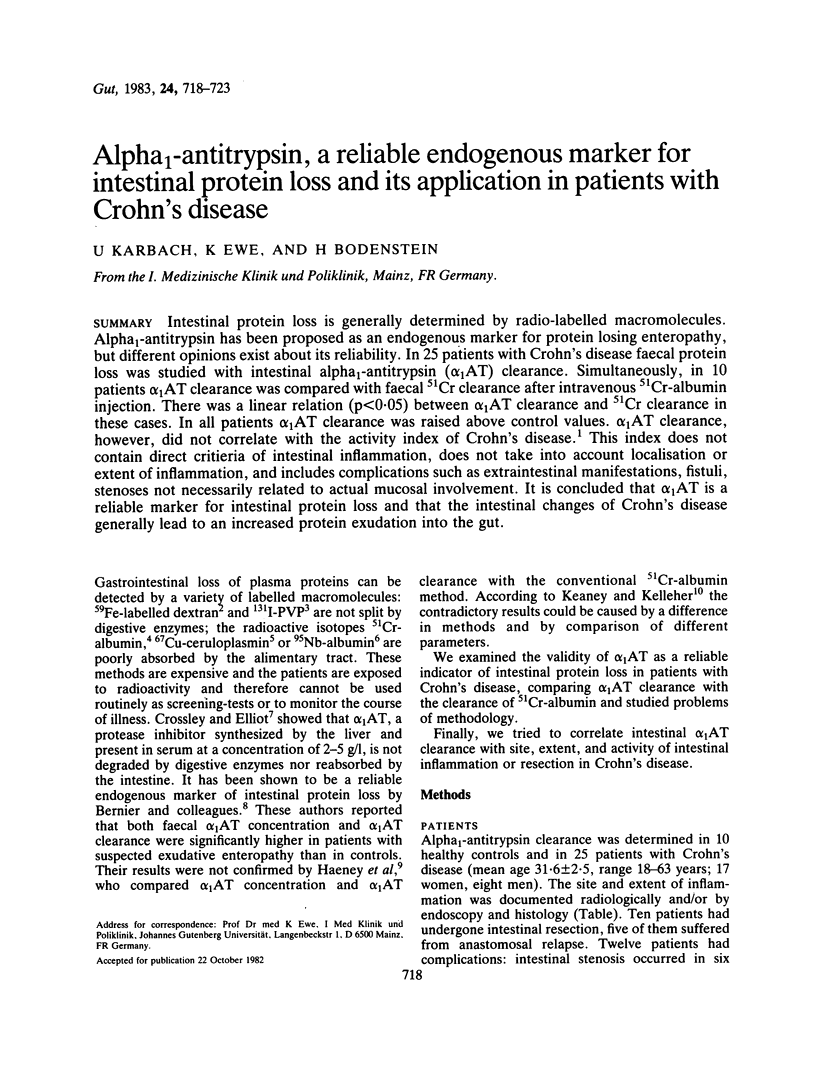
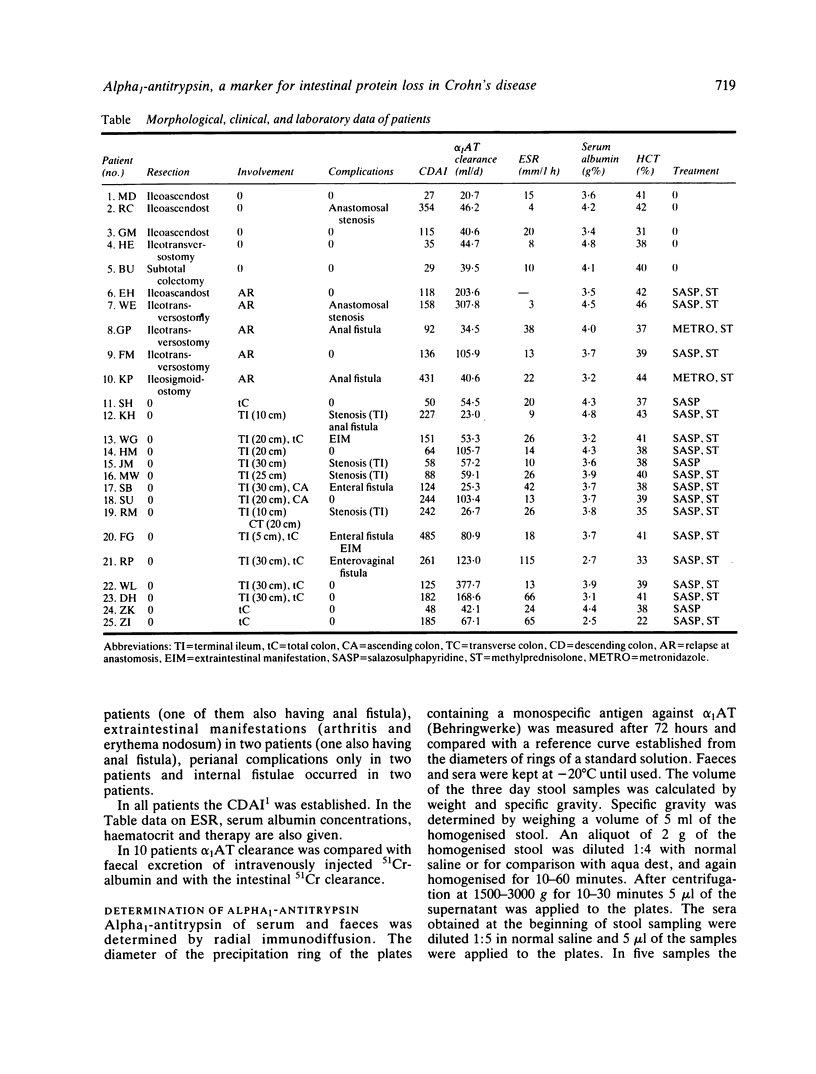
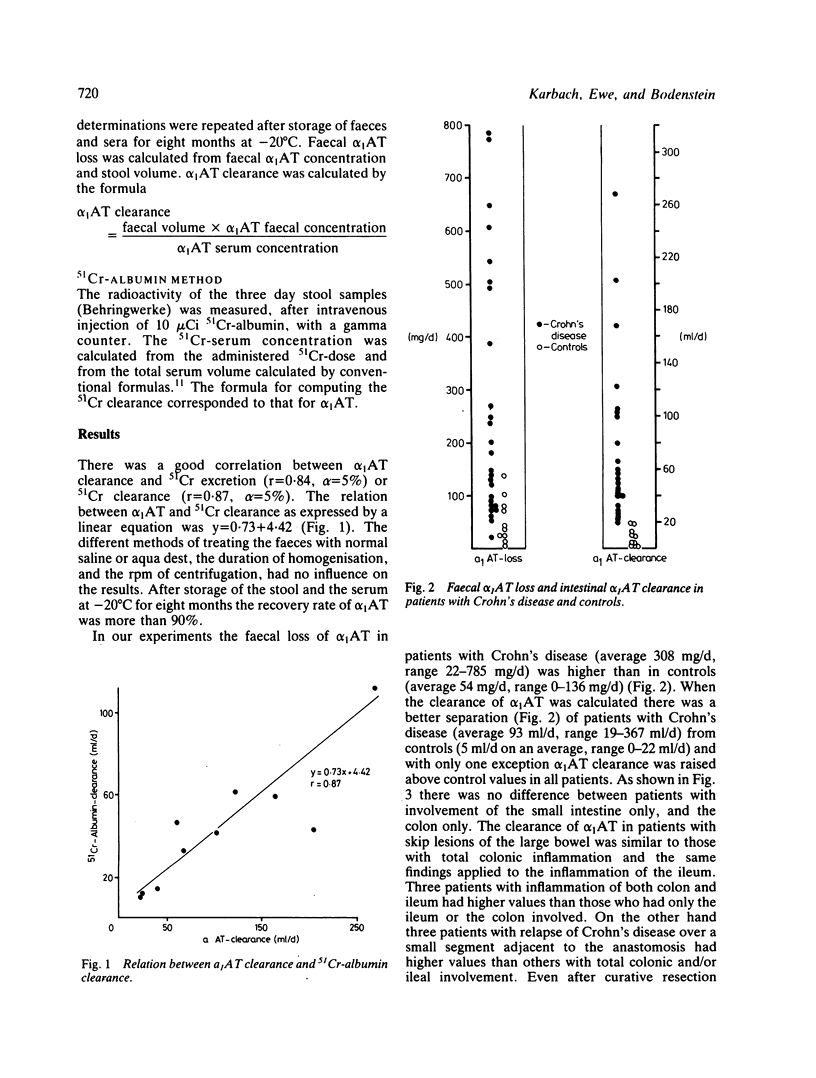
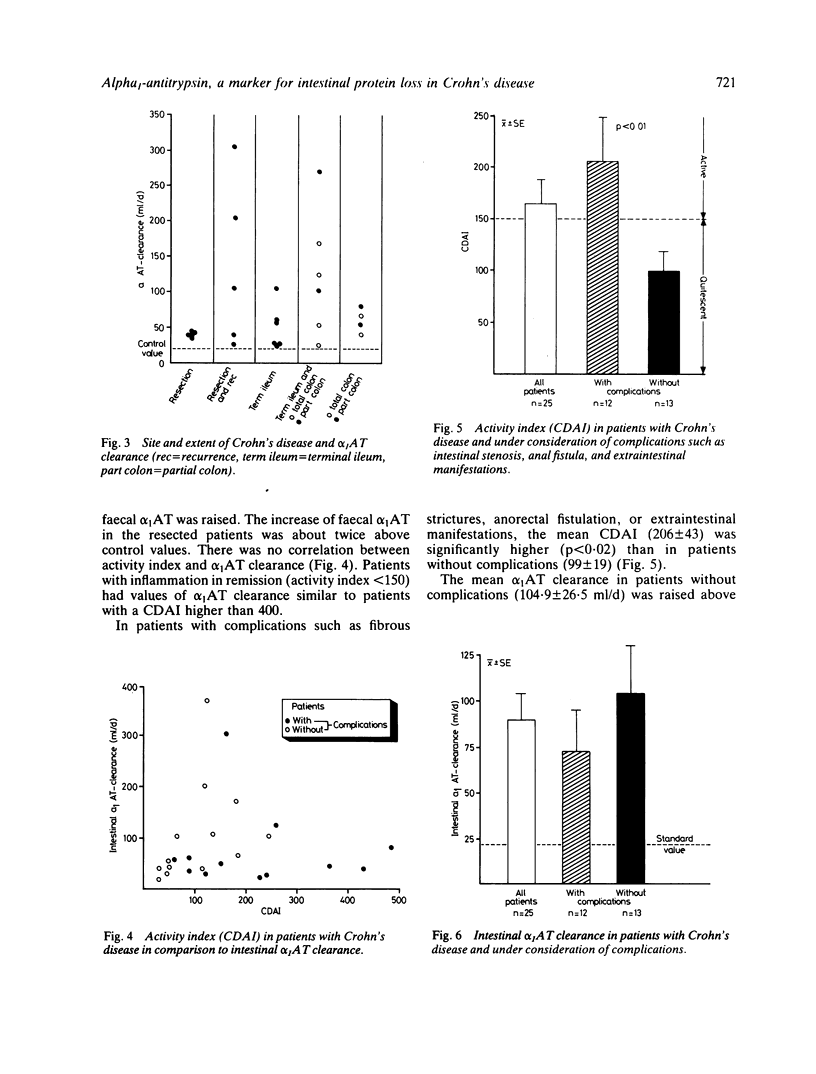
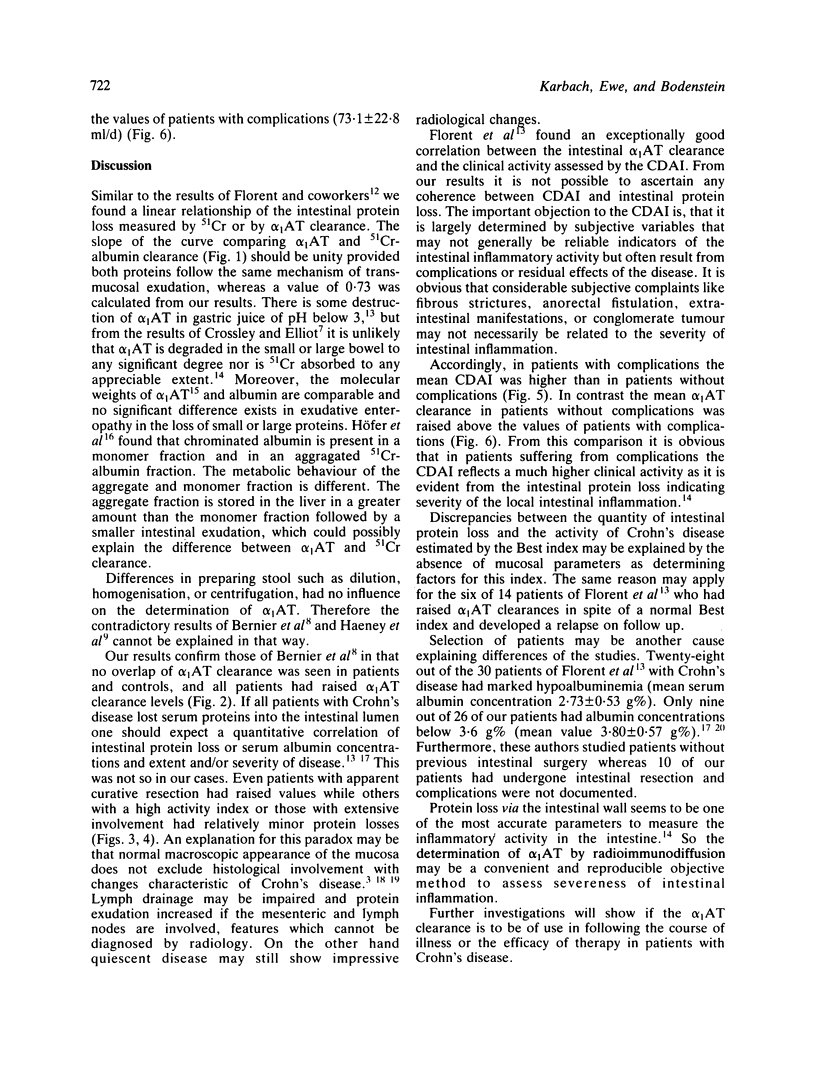
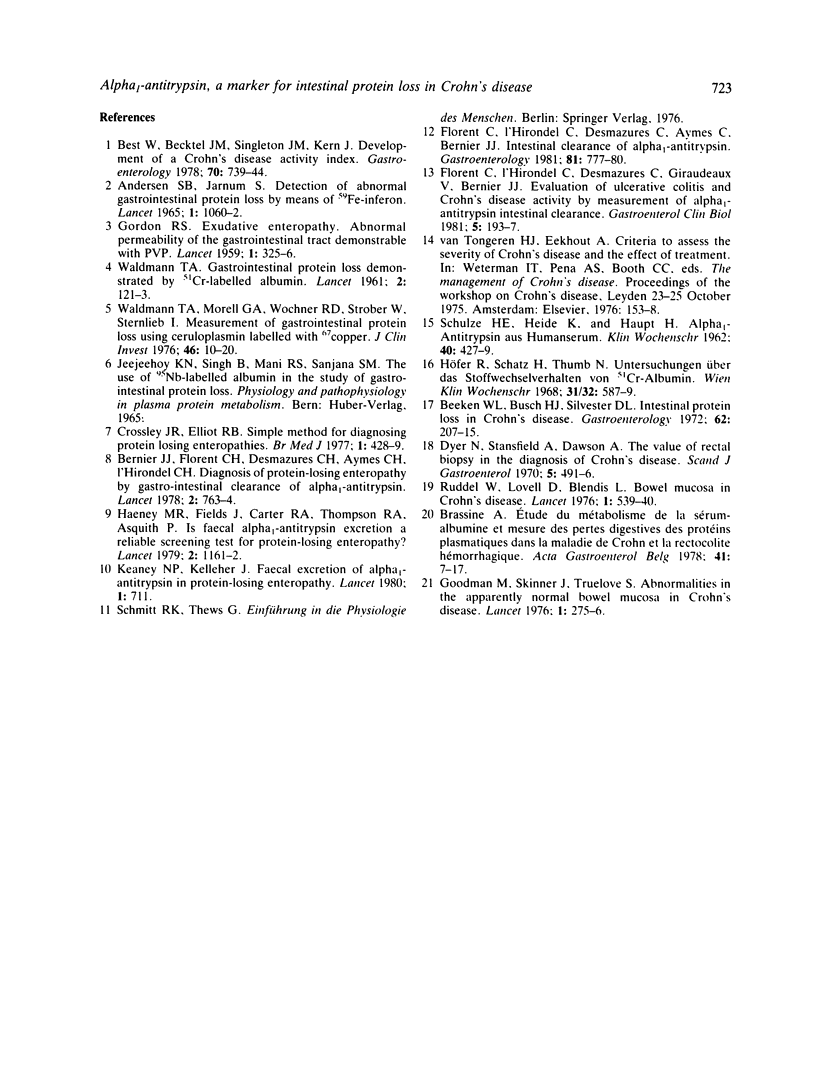
Selected References
These references are in PubMed. This may not be the complete list of references from this article.
- Andersen S. B., Jarnum S. Gastrointestinal protein loss measured with 59Fe-labelled iron-dextran. Lancet. 1966 May 14;1(7446):1060–1062. doi: 10.1016/s0140-6736(66)91008-7. [DOI] [PubMed] [Google Scholar]
- Beeken W. L., Busch H. J., Sylwester D. L. Intestinal protein loss in Crohn's disease. Gastroenterology. 1972 Feb;62(2):207–215. [PubMed] [Google Scholar]
- Bernier J. J., Florent C., Desmazures C., Aymes C., L'Hirondel C. Diagnosis of protein-losing enteropathy by gastrointestinal clearance of alpha1-antitrypsin. Lancet. 1978 Oct 7;2(8093):763–764. doi: 10.1016/s0140-6736(78)92650-8. [DOI] [PubMed] [Google Scholar]
- Crossley J. R., Elliott R. B. Simple method for diagnosing protein-losing enteropathies. Br Med J. 1977 Feb 12;1(6058):428–429. doi: 10.1136/bmj.1.6058.428-a. [DOI] [PMC free article] [PubMed] [Google Scholar]
- Florent C., L'Hirondel C., Desmazures C., Aymes C., Bernier J. J. Intestinal clearance of alpha 1-antitrypsin. A sensitive method for the detection of protein-losing enteropathy. Gastroenterology. 1981 Oct;81(4):777–780. [PubMed] [Google Scholar]
- GORDON R. S., Jr Exudative enteropathy: abnormal permeability of the gastrointestinal tract demonstrable with labelled polyvinylpyrrolidone. Lancet. 1959 Feb 14;1(7068):325–326. doi: 10.1016/s0140-6736(59)90309-5. [DOI] [PubMed] [Google Scholar]
- Haeney M. R., Fields J., Carter R. A., Thompson R. A., Asquith P. Is faecal alpha 1-antitrypsin excretion a reliable screening test for protein-losing enteropathy? Lancet. 1979 Dec 1;2(8153):1161–1162. doi: 10.1016/s0140-6736(79)92387-0. [DOI] [PubMed] [Google Scholar]
- Höfer R., Schatz H., Thumb N. Untersuchungen über das Stoffwechselverhalten von 51Cr-Albumin. Wien Klin Wochenschr. 1968 Aug 2;80(31):587–passim. [PubMed] [Google Scholar]
- Keaney N. P., Kelleher J. Faecal excretion of alpha 1-antitrypsin in protein-losing enteropathy. Lancet. 1980 Mar 29;1(8170):711–711. [PubMed] [Google Scholar]
- WALDMANN T. A. Gastrointestinal protein loss demonstrated by Cr-51-labelled albumin. Lancet. 1961 Jul 15;2(7194):121–123. doi: 10.1016/s0140-6736(61)92646-0. [DOI] [PubMed] [Google Scholar]
- Waldmann T. A., Morell A. G., Wochner R. D., Strober W., Sternlieb I. Measurement of gastrointestinal protein loss using ceruloplasmin labeled with copper. J Clin Invest. 1967 Jan;46(1):10–20. doi: 10.1172/JCI105502. [DOI] [PMC free article] [PubMed] [Google Scholar]


